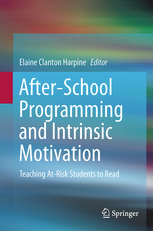No, actually, it will be another year of reading failure—guaranteed. Why? School superintendents, school boards, politicians, book publishers, universities training teachers, and others who actually control how reading is taught in the classroom are neither planning nor preparing changes that will make it easier for children to learn to read. Instead, it will be the same old failed teaching methods as usual. Most schools still use whole language, phonics, or balanced literacy—a combination of whole language and phonics. Yet, each of these three teaching methods has been proven over and over to be a failed teaching method [see my blog posts for 4-12-2019 and 1-21-2019 for research on the failure of phonics and whole language]. Yes, that’s right, scientific research has proved that whole language, phonics, and even balanced literacy are ineffective teaching methods. They do not work for all children and are believed to be one of the main causes of reading failure. So, why do we still use failed teaching methods?
Dr. Mark S. Seidenberg, a cognitive neuroscientist from the Department of Psychology at the University of Wisconsin-Madison, describes the problem by saying,
“How reading is taught is indeed a significant part of the literacy problem in the US and other countries…. In the US, the conflicting and often strongly entrenched interests of various stakeholders—educators, politicians, scientists, taxpayers, labor organizations, parent groups—make it hard to achieve meaningful change within the existing institutional structure of public education.” (p. 10)
Dr. Seidenberg points out three main problems on his new book, Language at the Speed of Sight: How We Read, Why so Many Can’t, and What Can Be Done About It (2017):
- current teaching practices are based on outdated assumptions.
- scientific research in reading has had very little effect on how reading is taught in the classroom.
- new neurobiological brain research in reading is being totally ignored by today’s educators.
- the brain bases of how reading skill is acquired--phonemic awareness.
- the basic mechanisms that support skilled reading—relating written script to the oral language system—spoken language.
- the causes of reading failure—primarily the teaching methods being used in the classroom.
One reviewer goes so far as to state that every teacher should read Seidenberg’s book. Great idea, but the problem is that classroom teachers in today’s schools do not decide how they will or will not teach reading. The teaching methods that are being used in the classroom this fall are mandated and handed down by school administrators, school boards, and politicians—local, state, and federal—and by money. Yes, those who make money from whole language and phonics textbooks, workbooks, and other teaching materials do not want to see new teaching methods brought into the classroom. In some instances, even tutors, particularly phonics tutors, do not want to see changes brought to the public-school classroom.
Yes, we can teach children to read. We have the teaching methods to do so. Research proves it. We just refuse to change and use a teaching method that works. If you need statistical research to bring change to your school, my forthcoming book (hitting the shelves in September), After-School Programming and Intrinsic Motivation (2019), demonstrates eight years of research showing that children who had failed in the classroom under whole language, phonics, and balanced literacy could indeed be taught to read successfully at their age level, even children from low socioeconomic neighborhoods. We had children who moved up four grade levels in reading in one year.
Yes, we really can teach all students to read. We just need to quit fighting the “whole language-phonics wars” and start teaching with a totally new method that actually can teach children how to read.

 RSS Feed
RSS Feed
